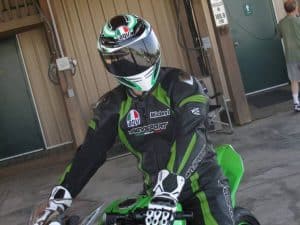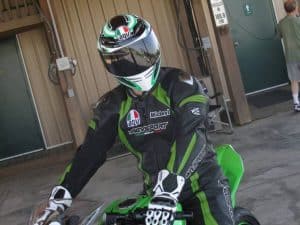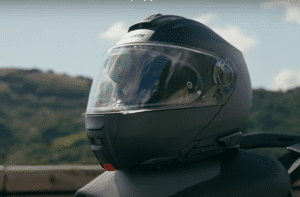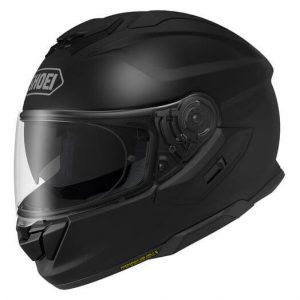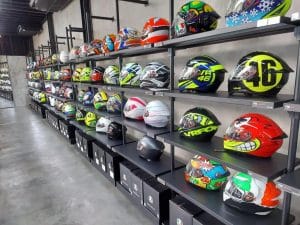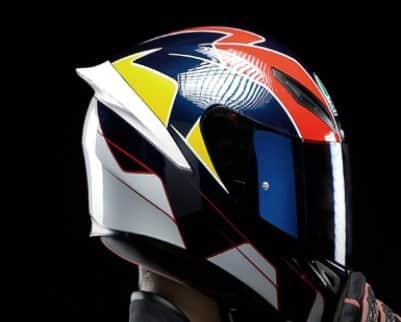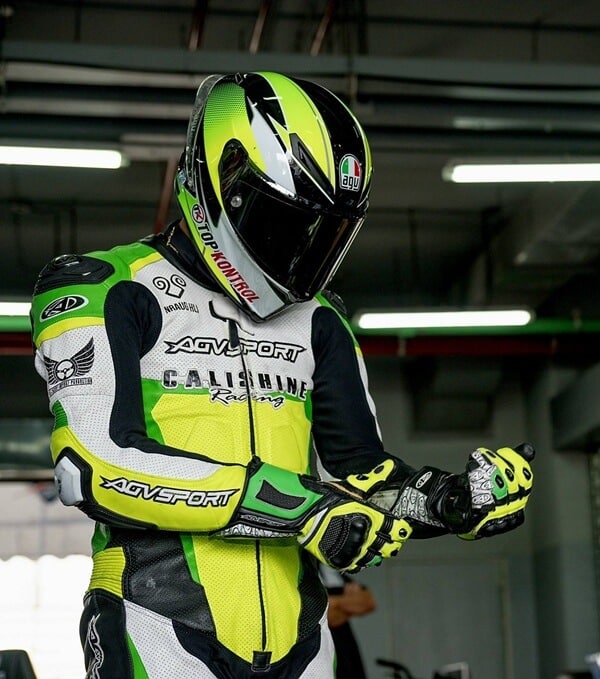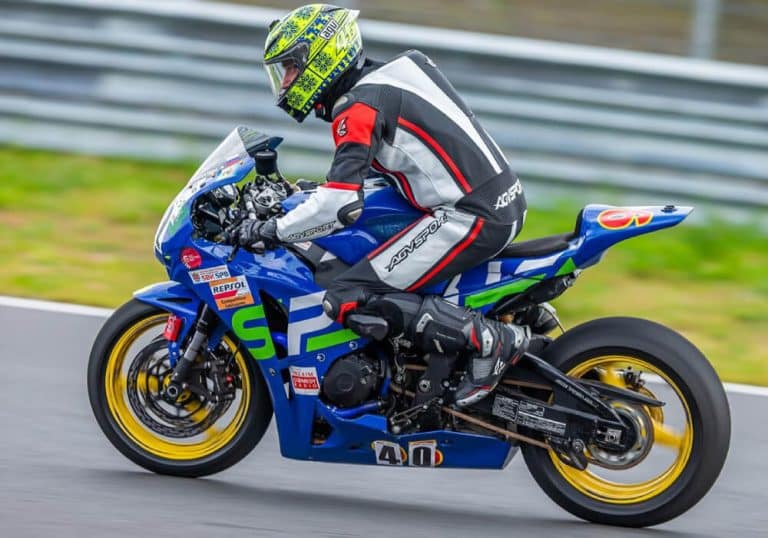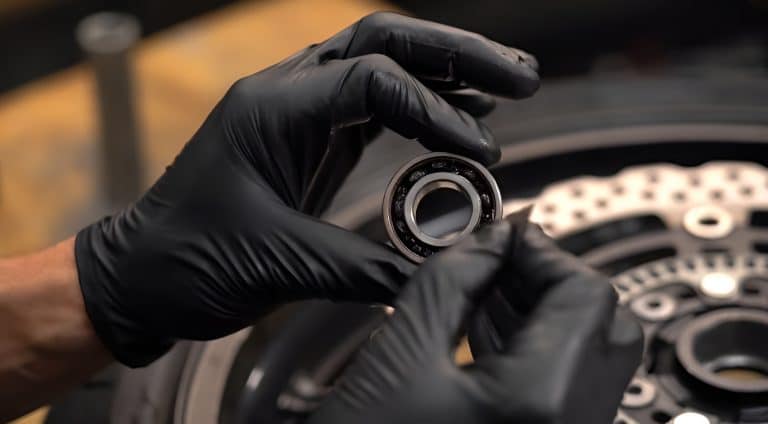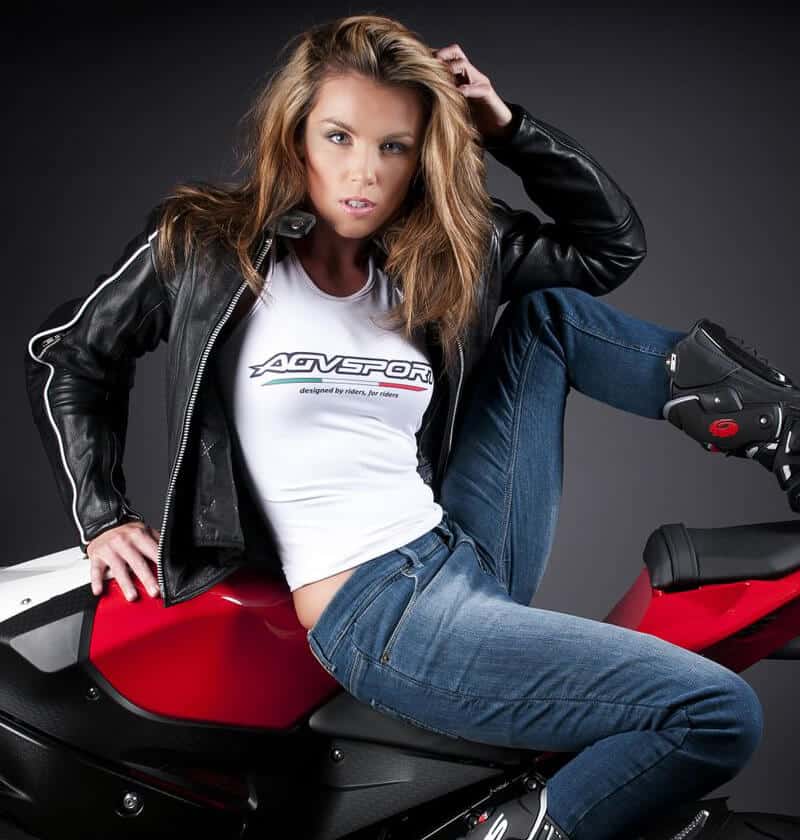Walking through the Yamaha stand at EICMA 2025 in Milan, the all-new 2026 YZF-R7 immediately caught my eye. Under the bright lights it looked sharper and more aggressive than its predecessor: a slimmed-down fairing with winglet tips, reshaped tank and tail, and a distinctive M-shaped LED duct that screams R-series DNA. Yamaha’s PR described it as “the bike that redefined the Supersport class… raising the bar again” with a sharper chassis and advanced electronics.
In person, I could see the effort: the new R7 still carries the familiar CP2 689cc parallel-twin heart, but every other detail has been overhauled. Its new styling is unmistakably R7, yet clearly evolved, which is a bold statement that Yamaha has doubled down on the R7’s blend of performance and everyday usability.

Yamaha Unveils the Updated YZF-R7 at EICMA 2025
Like many EICMA attendees who caught the news in real time, I learned on Nov 4, 2025 that Yamaha had officially unveiled the 2026 R7 at the show. The updates were comprehensive.
The bike retains its 689cc DOHC 270deg twin engine, still producing about 72 hp at 8,750 rpm and 50 lb-ft of torque at 6,500 rpm, but now gains ride-by-wire throttle (YCC-T) and a 6-axis IMU borrowed from the flagship R1. This unlocks a suite of rider aids, including cornering ABS, traction control, slide control, wheelie control, engine-brake management, and even launch control, which were unheard of on the old R7.
There’s also a third-generation Quick Shift System (up/down) for clutchless shifting, a modern 5-inch full-color TFT dash with smartphone/Garmin nav, and even cruise control on the highway. In short, Yamaha is positioning the new R7 as a tech-loaded supersport that offers “performance, accessibility, and price” for a broad range of riders.
Key Updates Yamaha Is Touting for the 2026 R7
| Category | Details | Rider Benefit |
| Engine | 689cc parallel-twin (from the MT-07) with 270° crank, 72 hp @ 8750 rpm, 50 lb-ft @ 6500 rpm | Smooth, torquey power delivery across the rev range, with enough punch for backroad sprints or track day fun. |
| Throttle/Injection | New Yamaha Chip Controlled Throttle (YCC-T) ride-by-wire system | Enables all the new electronics (ride modes, TC, cruise), while providing precise throttle control and eliminating cable maintenance. |
| Riding Modes & Electronics | Six-axis IMU, lean-sensitive ABS/TC/Slide Control, engine-braking management, and Launch Control. | Riders get an R1-level electronics suite for enhanced safety and performance, a rare offering on a $9K supersport motorcycle. |
| Customization & Presets | 3 preset Yamaha Ride Control modes (Sport/Street/Rain), 1 customizable, and 4 track-specific modes. | The ability to quickly and easily adapt the bike’s behavior to specific riding conditions (street, rain, track) and personal preference. |
| Quickshifter | Yamaha’s third-generation bi-directional Quick Shift System | Faster, smoother gear changes for street or track riding. |
| Frame & Chassis | Revised high-tensile steel frame (higher rigidity), new asymmetrical swingarm. | Tighter handling and better feedback without added weight. |
| Wheels | 10-spoke spin-forged aluminum wheels significantly cut unsprung mass. | Quicker steering response and improved suspension performance in corners. |
| Suspension | Fully adjustable 41mm KYB inverted forks (preload, rebound, compression) and linkage-style rear shock (preload, rebound) | Street-comfortable 4.7‑inch front and 4.8‑inch rear travel that can be tuned for spirited riding or light touring. |
| Brakes | Radial-mount 4-piston Brembo calipers with dual 298mm discs up front, and a single 245mm rear disc (cornering ABS standard, with optional rear ABS off) | Strong, modern braking feel with advanced ABS logic for confidence at the limit.
|
| Styling | All-new aero bodywork. Narrow front fairing with winglets, flush-turn signals in the mirrors, a minimalist LED headlight/taillight, and a sculpted tail with R-Series M-wing graphics | Sleek, race-inspired look that also improves high-speed stability. A special 70th Anniversary red/white speed-block edition (with gold logos) celebrates Yamaha’s heritage. |
| Display & Connectivity | New 5″ full-color TFT instrument panel with four display themes and a track. Smartphone integration via Y-Connect plus full turn-by-turn navigation through the Garmin StreetCross app | Modern interface for on-bike info, calls/texts, and navigation. Luxuries now available on the R7. |
| Weight | Claimed wet weight is about 417 lbs | Nearly the same as the previous R7, keeping power-to-weight strong for the class (roughly 0.18 lb/hp). |
These changes add up to a very different R7 under the skin.
Yamaha YZF-R7 Engine and Performance
The 2026 R7 keeps the same tried-and-true CP2 parallel-twin found in the MT-07 and original R7, so the headline numbers remain familiar: about 74 horsepower at 8,750 rpm and 50 lb-ft of torque at 6,500 rpm. Yamaha’s engineers did not increase displacement or peak output; instead, the focus is on usability and responsiveness. The engine runs at a relatively mild 11.5:1 compression ratio and retains its 270° crank and counterbalancer, giving the R7 a smooth yet muscular midrange pull.
In street testing of the old R7, we know the CP2 is happiest in the middle of the rev band. It accelerates strongly out of corners and pulls cleanly to redline without harsh top-end rush. Expect more of the same balanced performance in the 2026 model.
That said, the new R7 does have some subtle mechanical tweaks for feel. The intake now uses asymmetrical funnel lengths (borrowed from the latest MT-07), which should enhance the induction roar and throttle response as RPMs climb. The exhaust note remains the characteristic subdued growl of a crossplane twin, but the chassis enhancements (lighter wheels, stiffer frame) mean more of the engine’s power goes into propulsion rather than vibration.
Cruise control, a rare feature on a bike at this price, has been added as standard. Once you’re above 25 mph, it can be engaged to keep a set throttle opening, making highway riding less fatiguing than before.
On paper and at speed the R7 still isn’t a full-on racebike. Its 72 hp is modest compared to liter-class machines, but the bike’s power-to-weight is competitive. At 417 lb wet, the R7 is only a few pounds heavier than lightweight naked bikes, so it feels spry. The strong midrange means it can pull from city speeds easily, while its redline (around 11,000 rpm) still lets you rev it out on track.
Importantly, the power delivery is linear and controllable, exactly what an intermediate supersport rider wants. And since Yamaha kept the lever actuated wet clutch (now with an assist-and-slipper action), stalling or wheelies are easy to manage.
Transmission and Electronics
The 2026 R7 gains a full electronic makeover. The big change is Yamaha’s Chip Controlled Throttle (YCC-T) ride-by-wire system, which replaced the old cable throttle. This was the missing piece to unlock a modern electronic suite. Tapping into a six-axis IMU (inertial sensor) derived from the R1, the R7 can now monitor its lean angle and adjust controls on the fly.
Standard rider aids include lean-angle traction control (with four intervention levels plus off), a slide control system for controlled slides, front-wheel lift (wheelie) control, cornering ABS (brake control) and selectable engine-brake management. Essentially, you can dial in exactly how aggressive the bike is allowed to get in any direction.
Yamaha bundled these into its Yamaha Ride Control (YRC) system. There are three preset ride modes (Sport, Street, Rain) to quickly adjust throttle response and traction/slide intervention. Sport unleashes crisp throttle and minimal intervention, Street smooths out the power, and Rain is very gentle on the throttle.
You can also set up a “Custom” mode or even four separate track modes, each with its own user-chosen map and TC level. All of this is programmable through the new dash or via Yamaha’s Y-Connect smartphone app. It’s essentially the same flexibility found on Yamaha’s R9 and R1 superbikes, now on the R7.
Another big addition is the Quick Shift System (QSS). The 2026 R7 uses Yamaha’s 3rd-generation system for both upshifts and downshifts. At speeds above 9 mph it will quickly change gears clutchlessly: you can hold full throttle to upshift or blip the throttle to downshift without the lever. This feature makes it much easier to keep both hands on the bars during spirited riding. (Yamaha even lets you choose between a road setting or a more aggressive race setting for the quickshifter action.) Coupled with the assist-and-slipper clutch, you’ll find hard downshifts feel smoother and manual shifting is all but eliminated if you don’t want it.
All the rider controls and information are delivered on a vivid 5-inch TFT screen. This is a major upgrade over the old LCD gauge. The TFT has multiple display themes and can show track-specific data (lap times, shift lights, etc.). Smartphone integration (via Bluetooth and Yamaha’s Y-Connect app) is built in, so you can see incoming calls/texts and even use turn-by-turn navigation (through the Garmin StreetCross app) on the display.
In short, the R7’s electronics package is now as sophisticated as its bigger R-series siblings, a surprising step up from the analog simplicity of the outgoing model.
Yamaha YZF-R7 Chassis and Suspension
Underneath the bodywork, Yamaha has reengineered the R7’s chassis to sharpen its handling. The high-tensile steel tubular frame is largely the same design but heavily revised for 2026.
Yamaha claims it has higher torsional and longitudinal rigidity while keeping total weight unchanged. A new asymmetrical swingarm (also stiffer) complements the frame upgrades. The net effect is a chassis that feels more planted at speed and more responsive entering corners. You can expect less flex and a crisper feel mid-corner, much like the difference between an old-school trellis and a modern reinforced trellis.
Yamaha also added spin-forged aluminum wheels, a 10-spoke design, to shave unsprung weight. Lighter wheels (shod with Bridgestone Battlax S23 sport tires) mean the forks and rear shock don’t have to wrestle as much mass, so suspension response is quicker and more controlled. In practice, this should yield sharper turn-in and improved feedback, especially under heavy braking or side loads.
Speaking of suspension, the 2026 R7 keeps a fully-adjustable set-up but upgraded the internals. The 41mm inverted forks now have aluminum internals to cut a bit of weight, though they still offer preload, compression and rebound adjustment. Travel is about 4.7 inches up front. At the rear, a linked Monocross shock (with preload and rebound adjustment) gives about 4.8 inches of travel. This travel is similar to the old R7, so the bike remains fairly street-oriented. But the tuning and increased chassis rigidity should make it a capable canyon carver.
For street riding, I will probably set a moderate preload and just tweak rebound to match their weight. Overall geometry is fairly sporty: the rake is 24.0° and trail 3.6 in, yielding a 54.9-inch wheelbase, both very close to the old R7 and rivals like the Kawasaki Ninja 650 (55.5 in).
Braking and Design
Brake hardware on the new R7 is significantly beefed up. Where the old R7 used a single front disc, the 2026 model gets dual 298mm rotors up front with 4-piston calipers. Yamaha doesn’t explicitly name the calipers, but rumors and spy photos suggest Brembo radial units (or at least a Brembo master cylinder was noted).
In any case, stopping power is now on par with higher-end sportbikes, and Yamaha’s cornering ABS (which can allow a subtle drift) helps put the power down safely. The rear brake is a 245mm disc with a single-piston caliper, also tied into ABS. Uniquely, the R7 offers a switch to disable the rear ABS for track use or more aggressive sliding, a rare feature on a near-$10k street bike. Adjustable brake levers and a new radial front master cylinder (from the R1 line) round out the braking upgrades, giving riders more control and feel than before.
On the aesthetics side, Yamaha went all-out to give the R7 a next-generation look. The new front fairing is compact and aerodynamically active: it sports small winglet extensions and a slender shape that minimizes drag. Mirrors and controls have been shifted slightly outward, partly to accommodate flush LED turn signals built into the mirror housings, a clean, race-inspired touch. The LED headlight and daytime-position lights are very minimalist, reinforcing the R-series M-wing motif. Side panels are slimmed and sculpted for better air flow and rider mobility.
I noticed the fuel tank has been reshaped too; narrower around the knees, to allow more movement on the bike. The seat is now lower by about an inch (down to 32.7 inches), which should help shorter riders feel less tippy. Overall, the bodywork looks like a distilled R1, but sized for half-liter power: aggressive, futuristic, and unmistakably Yamaha. A beefy aluminum under-engine skid plate and optional handguards (on higher trims) underline the R7’s pseudo-adventure style roots (a nod to the R7 WorldSBK racers of the ’90s).
One highlight in the design category is the 70th Anniversary Edition. Yamaha will offer a limited-run R7 with the classic 1960s red-white speedblock livery, gold tuning-fork logos and special badging. It’s a sexy homage to Yamaha’s racing heritage, and at $9,699 MSRP, it’s only a small premium over the base price. Apart from colors and some gold accents, the Anniversary model is mechanically identical, but it will definitely stand out in the dealer showroom (and at track days).
Yamaha YZF-R7 Availability and Pricing
Yamaha has confirmed U.S. dealer deliveries of the 2026 R7 will begin in February 2026. The base price is set at $9,399 MSRP, about $200 above the 2025 model’s sticker. This is reasonable considering how much tech has been added. You can choose Team Yamaha Blue, Raven Black, or the two-tone Breaker Cyan/Raven Black. The $9,699 70th Anniversary Edition (red/white) arrives on the same timeline.
For reference, Yamaha’s press kit compares the R7’s price and features favorably to other bikes in its segment. It emphasizes that the R7’s enhancements (high-tech electronics, quickshifter, etc.) arrive without pushing it out of reach of its core market. As the summary puts it, the R7 “helped redefine the Supersport category” when introduced, and the 2026 update keeps it competitively priced.
Yamaha YZF-R7 vs Outgoing Model and Rivals
| Category | 2026 Yamaha YZF-R7 | Outgoing R7 (2022–25) | Aprilia RS 660 | Kawasaki Ninja 650 |
| Engine / Displacement | 689 cc parallel-twin, DOHC, liquid-cooled | Same 689 cc parallel-twin | 659 cc parallel-twin | 649 cc parallel-twin |
| Power | 72 hp @ 8,750 rpm | 72 hp @ 8,750 rpm | 100 hp @ 10,500 rpm | 68 hp @ 8,000 rpm |
| Torque | 49 lb-ft @ 6,500 rpm | 49 lb-ft | 49.4 lb-ft | 47 lb-ft |
| Transmission | 6-speed with quickshifter (optional assist & slipper clutch) | 6-speed (no IMU integration) | 6-speed with quickshifter & slipper clutch | 6-speed with assist/slipper clutch |
| Electronics / Rider Aids | Ride-by-wire, IMU-based ABS & traction, ride modes, cruise control, quickshifter | Conventional throttle, no IMU, no cruise control | Full IMU suite with ABS, TC, wheelie control, engine maps | Basic ABS, 2-level traction control (no IMU) |
| Frame & Swingarm | Redesigned steel frame & swingarm for stiffness | Steel frame (same weight) | Aluminum twin-spar frame | Steel trellis frame |
| Wheels & Tires | New spin-forged alloys | Cast alloys | Cast alloys | Cast alloys |
| Suspension | Adjustable KYB USD fork & monoshock (unchanged spec, re-tuned) | KYB USD fork & monoshock | Adjustable Kayaba units | 41 mm telescopic fork, link shock |
| Brakes | Dual 298 mm front discs / 4-pot calipers | Same setup | Dual 320 mm Brembos | Dual 300 mm discs |
| Ergonomics / Seat Height | 32.7 in seat, bars 20 mm higher & closer to rider | 33.3 in seat, lower bars | 32.3 in seat, sport ergos | 31.1 in seat, upright ergos |
| Wet Weight | 417 lb | 417 lb | 403 lb | 419 lb |
| Aerodynamics / Bodywork | New fairing with winglets & mirror signals; slimmer profile | Classic R7 faired design (no winglets) | Sport fairing with winglets and race tail | Conventional sport fairing (no winglets) |
| Display & Connectivity | TFT color dash with Y-Connect connectivity | LCD dash (no connectivity) | TFT dash with Aprilia MIA connectivity | 4.3-in TFT with Rideology app |
| Price (USD) | $9,399 | $9,199 (average prior MSRP) | $11,549 – $11,749 | $7,999 |
| Market Position | Middleweight supersport with modern aids and affordable price | Entry-supersport bridge model | Premium Euro supersport with race-spec electronics | Value sport tourer/commuter |
| My Key Takeaway | Major update with IMU and rider aids at a reasonable price | Simpler but effective base supersport | More powerful and tech-rich, but costly | Affordable and friendly, but less performance-oriented |
In summary, the new R7 sits squarely between these rivals. It offers more performance and tech than the Kawasaki at a slightly higher cost, but it is more affordable (and less extreme) than the Aprilia. It also undercuts the pricing of newer competitors like the Suzuki GSX-8R (roughly 93 hp, $9,439 MSRP) by keeping the entry price under $10k. Yamaha seems to have calculated that the R7’s sweet spot is in blending accessible performance with high-end features, essentially bringing premium supersport attributes down to a midweight platform.
Yamaha YZF-R7 First Impressions: Strengths and Potential Drawbacks
Strengths:
- Rich Electronics Package: The new R7 is laden with advanced tech, including lean-sensitive ABS, multi-level TC/slide control, lift control, launch control, cruise, customizable ride modes and a sharp TFT display with nav. These features are class-leading at this price.
- Improved Ergonomics: The ergonomics have been thoughtfully tuned. Bars are higher and closer, the tank is slimmer, and the seat is one inch lower (32.7″), making the bike more manageable for average-height riders. An assist slipper clutch and cruise control also enhance everyday usability.
- Balanced Performance: The 689cc engine is proven and torquey; on the R7’s modest 417-lb chassis it feels brisk without being scary. The new quickshifter and lighter wheels further enhance the riding experience, making this R7 fun on backroads or track days.
- Striking New Look: The updated styling is eye-catching and purposeful. The slim fairing with winglets and integrated mirror signals gives it a high-tech racebike vibe. The 70th Anniversary edition paint is a special touch.
- Competitive Value: Even with all the upgrades, Yamaha only raised the MSRP by a couple of hundred dollars. At $9,399, it offers premium features (IMU, nav, etc.) that many rivals reserve for higher price points.
Potential Drawbacks:
- Power vs. High-End Rivals: With only 72 hp, the R7 isn’t a top performer on paper (especially next to 100-hp bikes). Some riders seeking ultimate speed might find it underwhelming compared to literbikes or even the RS660.
- Weight and Agility: The 417-lb wet weight is about the same as many larger bikes. It’s light for an R-series, but not featherweight; the R7 won’t change direction as instantaneously as a 300-lb sportbike would. Riders expecting a super-nimble experience may notice the bulk.
- Seat Height: Despite the drop, 32.7″ is still tall. It’s more approachable than before, but some shorter riders may still struggle with flat-footing.
- Price Creep: The R7’s updates push its price upward. At nearly $9.4k, it sits uncomfortably close to some 600cc sportbikes. Optional accessories could raise the final tag further.
- New Tech, Unknown Long-Term: The added electronics (YRC, IMU systems) are impressive, but being entirely new means there’s some risk of bugs or maintenance quirks. Early adopters may find software updates are needed after launch.
Overall, the 2026 Yamaha R7 impresses with its wealth of new features and refined ride dynamics. It tightens up everything about the old bike without altering its core character. The biggest question mark will be whether riders feel the R7’s 72 horses are enough, given the price and expectations. But for buyers who value modern tech and a friendly yet sporty ride, this new R7 appears to hit a sweet spot.
2026 Yamaha YZF-R7 Full Specifications
Below is a summary of the major technical specs for the 2026 YZF-R7:
| Category | Specification |
| Engine Type | 689cc liquid-cooled, 4-stroke, DOHC parallel twin; 4 valves per cylinder |
| Bore × Stroke | 80.0 × 68.6 mm |
| Compression Ratio | 11.5:1 |
| Power | 72 hp (53 kW) @ 8,750 rpm |
| Torque | 50 lb-ft (68 Nm) @ 6,500 rpm |
| Fuel System | Fuel injection, YCC-T ride-by-wire |
| Transmission | 6-speed; multiplate wet clutch with Assist & Slipper function |
| Final Drive | Chain |
| Frame | Revised tubular steel trellis frame |
| Front Suspension | 41mm inverted KYB forks; adjustable preload, compression & rebound; 4.7 in. travel |
| Rear Suspension | Link-type Monocross shock; adjustable preload & rebound; 4.8 in. travel |
| Front Brakes | Dual 298mm hydraulic discs; radially mounted 4-piston calipers; Cornering ABS standard |
| Rear Brake | 245mm hydraulic disc; 1-piston caliper; Cornering ABS standard (rear ABS can be switched off) |
| Wheels (F/R) | Spin-forged aluminum 10-spoke (17″ × 3.5″) / (17″ × 5.5″) |
| Tires (F/R) | Bridgestone Battlax Hypersport S23: 120/70-ZR17 / 180/55-ZR17 |
| Wheelbase | 54.9 in (1394 mm) |
| Rake / Trail | 24.0° / 3.6 in (91.5° / 92 mm) |
| Seat Height | 32.7 in (830 mm) |
| Fuel Capacity | 3.7 gal (14.0 liters) |
| Wet Weight | 417 lb (189 kg) |
| Electronics | 5″ full-color TFT display; Yamaha Y-Connect smartphone connectivity; Garmin StreetCross nav; Cruise control; IMU-based TCS, SCS, LIF, BC, EBM, LC; YRC ride modes; Quick Shifter; ABS (incl. Rear-ABS off) |
| Notable Features | Quick Shift System (clutchless up/down); LED lighting; assist & slipper clutch; Yamaha Chip Controlled Throttle; 70th Anniversary Edition livery option |
Information for this article was partially sourced and researched from the following authoritative government agencies, educational institutions, and nonprofit organizations:
M/A

